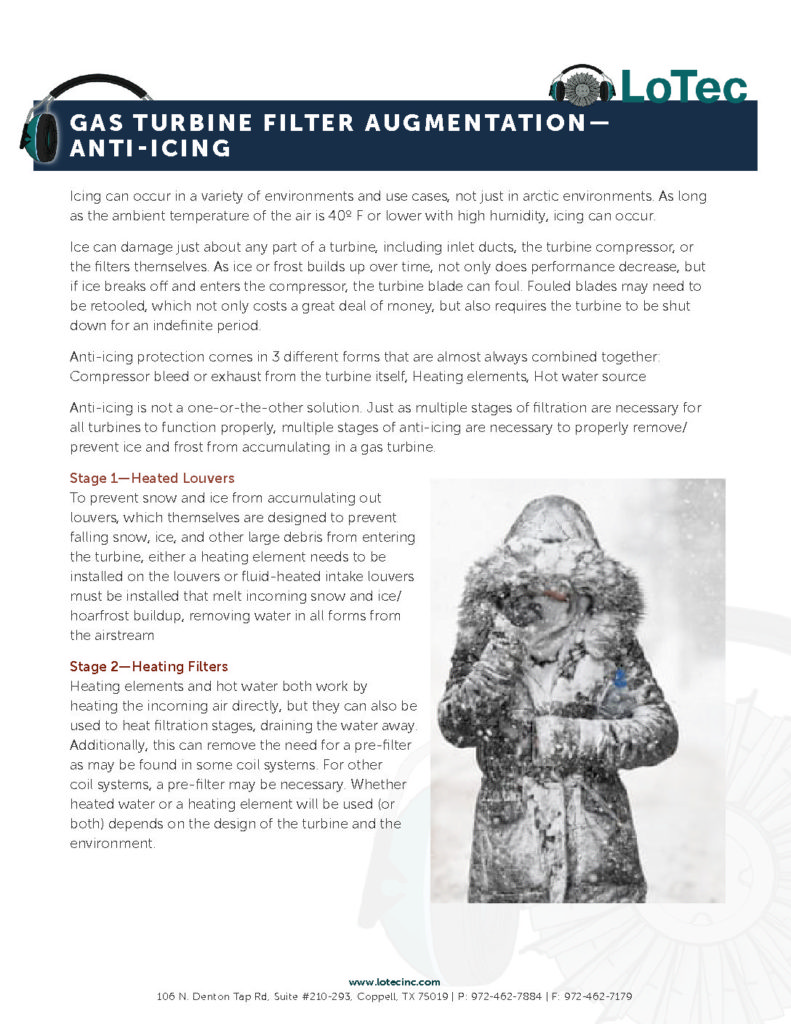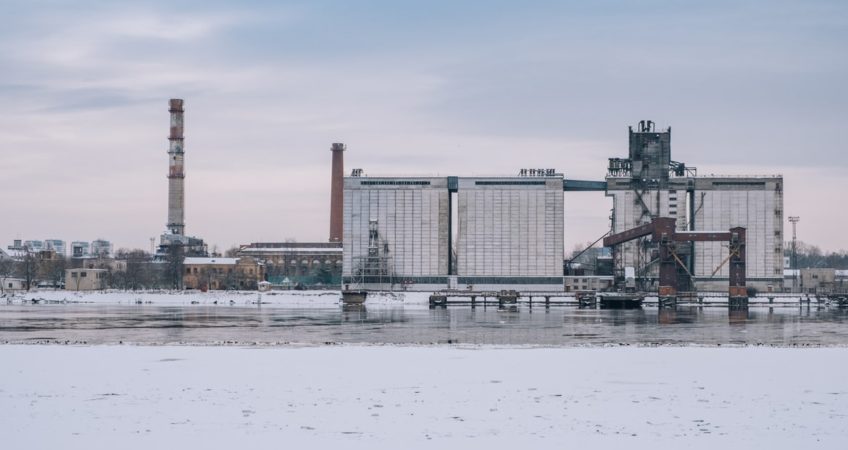Icing can occur in a variety of environments and use cases, not just in arctic environments. As long as the ambient temperature of the air is 40º F or lower with high humidity, icing can occur.
Ice can damage just about any part of a turbine, including inlet ducts, the turbine compressor, or the filters themselves. As ice or frost builds up over time, not only does performance decrease, but if ice breaks off and enters the compressor, the turbine blade can foul. Fouled blades may need to be retooled, which not only costs a great deal of money, but also requires the turbine to be shut down for an indefinite period.
Anti-icing protection comes in 3 different forms that are almost always combined together: Compressor bleed or exhaust from the turbine itself, Heating elements, Hot water source
Anti-icing is not a one-or-the-other solution. Just as multiple stages of filtration are necessary for all turbines to function properly, multiple stages of anti-icing are necessary to properly remove/prevent ice and frost from accumulating in a gas turbine.
Stage 1—Heated Louvers
To prevent snow and ice from accumulating out louvers, which themselves are designed to prevent falling snow, ice, and other large debris from entering
the turbine, either a heating element needs to be installed on the louvers or fluid-heated intake louvers must be installed that melt incoming snow and ice/
hoarfrost buildup, removing water in all forms from the airstream
Stage 2—Heating Filters
Heating elements and hot water both work by heating the incoming air directly, but they can also be used to heat filtration stages, draining the water away. Additionally, this can remove the need for a pre-filter as may be found in some coil systems. For other coil systems, a pre-filter may be necessary. Whether heated water or a heating element will be used (or both) depends on the design of the turbine and the environment.
Stage 3—Compressor Bleed/Exhaust
One common form of anti-icing protection is the use of compressor bleed or exhaust, which is recirculated back to the inlet air. While this is a simple and straightforward solution, it results in efficiency losses that scale depending on how much bleed air is taken from the exit. Compressor bleed is designed to prevent
icing on the blade itself, but this stage is not always necessary if proper heating elements or heated water systems have been put in place. In extreme environments, compressor bleed will not be sufficient alone to prevent icing.


